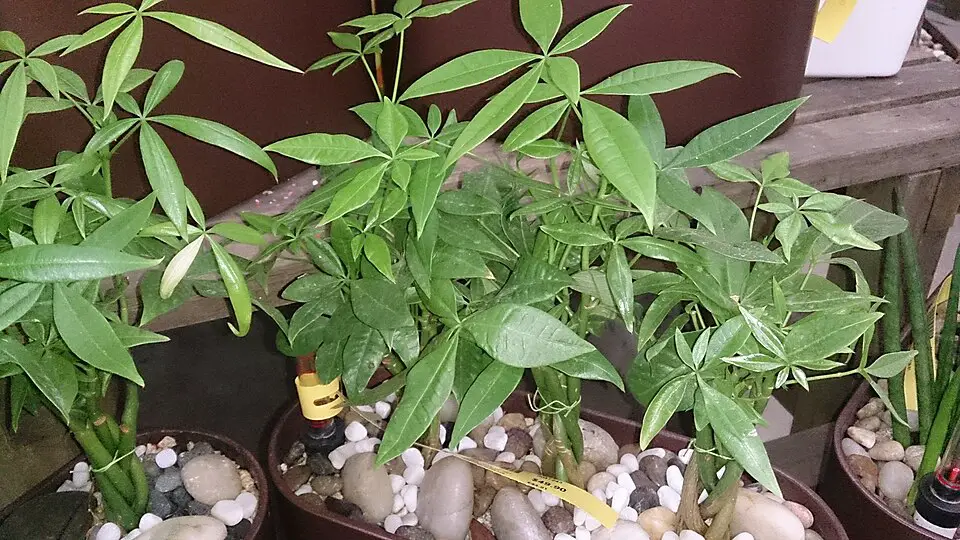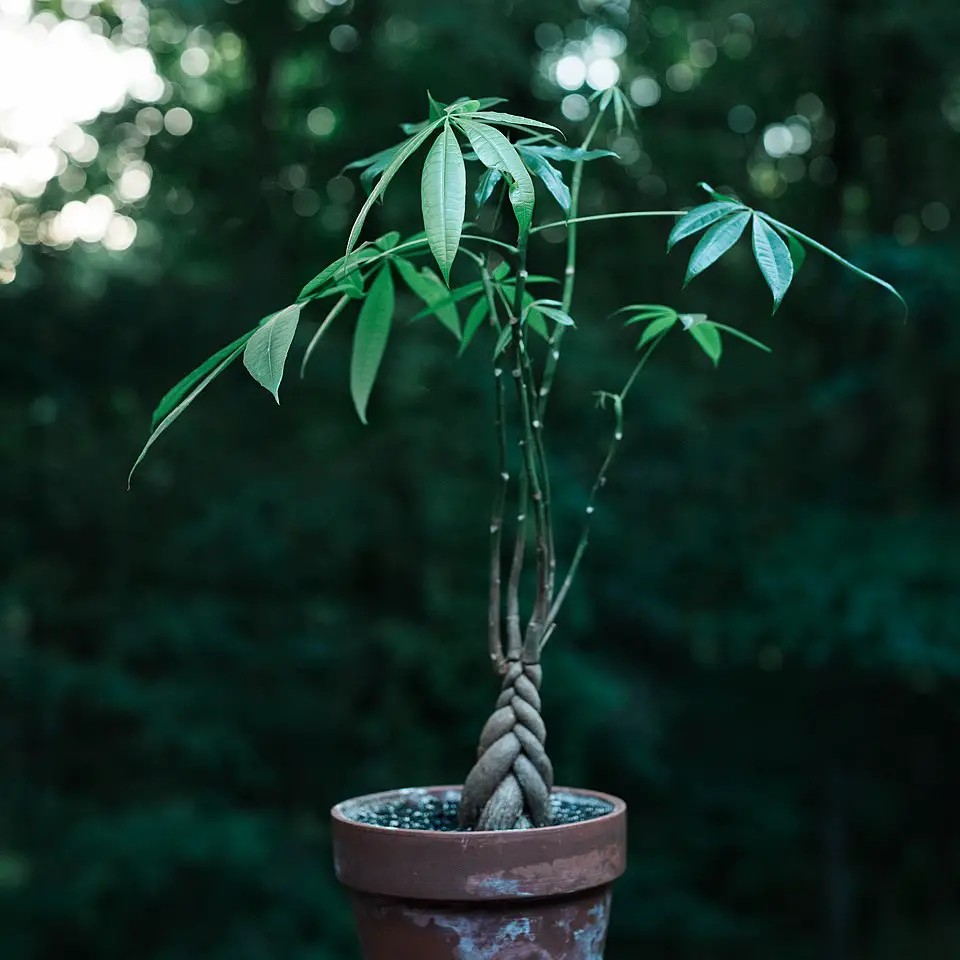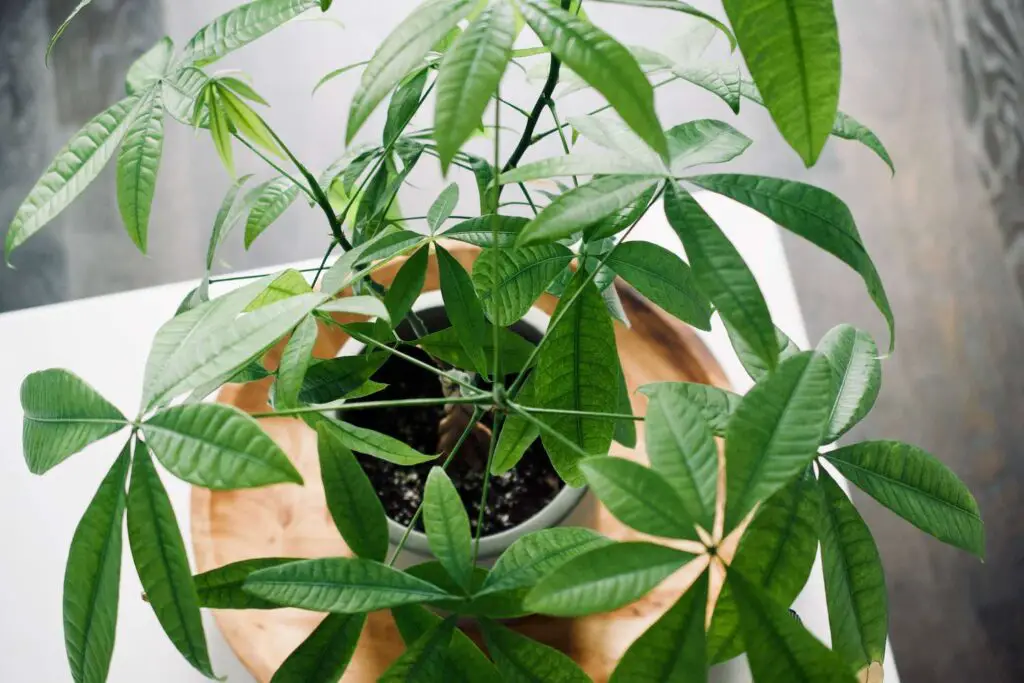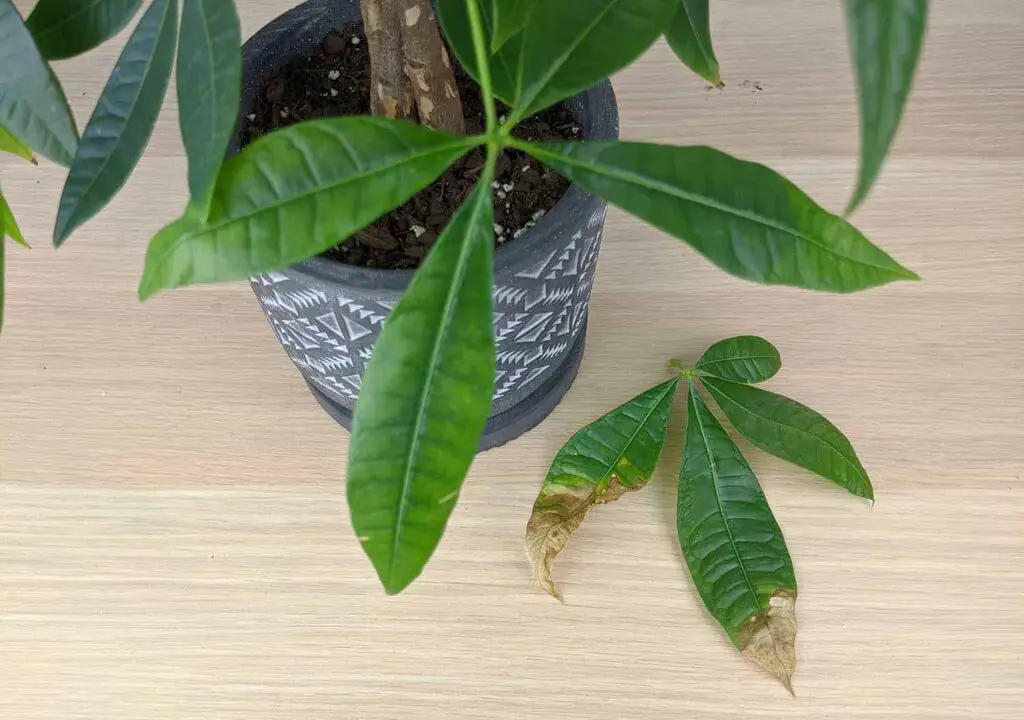The best fertilizer for a Money Tree is a balanced, water-soluble fertilizer with a ratio of 20-20-20 or similar. These fertilizers provide essential nutrients that promote healthy growth and vibrant foliage, ensuring your plant thrives indoors.
Understanding the Money Tree
The Money Tree, scientifically known as Pachira aquatica, is a popular houseplant known for its attractive braided trunk and lush green leaves. It is often associated with good luck and prosperity in various cultures. Originating from Central and South America, this plant has gained immense popularity worldwide due to its resilience and ease of care.

Money Trees thrive in bright, indirect sunlight and prefer well-draining soil. While they are relatively low-maintenance, providing the right nutrients is crucial for their growth and overall health. This is where fertilization comes into play. Proper fertilization ensures that the plant receives the essential elements it needs to flourish.
Why Fertilize Your Money Tree?
Fertilizing your Money Tree helps replenish the nutrients that may be depleted in the potting soil. Over time, soil loses its nutrient content, especially if the plant has been potted for a long duration. Regular fertilization supports robust growth, vibrant leaves, and resistance to pests and diseases.
Here are some key benefits of fertilizing your Money Tree:

- Improved Growth: Fertilizers provide essential nutrients that boost the plant’s growth rate.
- Enhanced Leaf Color: Nutrients like nitrogen help maintain vibrant green foliage.
- Pest Resistance: A healthy plant is less susceptible to pests and diseases.
- Overall Health: Regular nutrition keeps the plant strong and thriving.
Choosing the Right Fertilizer
Selecting the appropriate fertilizer for your Money Tree involves understanding its nutritional needs. The ideal fertilizer should be balanced to provide equal parts of nitrogen, phosphorus, and potassium (N-P-K ratio). Here are some options to consider:
| Fertilizer Type | N-P-K Ratio | Application Frequency |
|---|---|---|
| Water-Soluble Fertilizer | 20-20-20 | Every 4-6 weeks |
| Slow-Release Fertilizer | 14-14-14 | Every 3 months |
| Organic Fertilizer | Varies | Every month |
Water-soluble fertilizers are quick to absorb and provide immediate nutrients to your Money Tree. Slow-release fertilizers offer a gradual nutrient supply over time, making them convenient for long-term care. Organic fertilizers are great for those who prefer a natural approach, though they may require more frequent applications.
Application Tips
When applying fertilizer to your Money Tree, it is important to follow some guidelines to avoid over-fertilization. Over-fertilization can harm the plant and lead to root burn.

- Always dilute water-soluble fertilizers according to the package instructions.
- Fertilize during the growing season, which is typically spring and summer.
- Avoid fertilizing during the dormant winter months.
- Water the plant thoroughly before applying fertilizer to avoid root damage.
By following these guidelines, you can ensure that your Money Tree receives the right nutrients it needs for healthy growth and development.
Signs Your Money Tree Needs Fertilizer
Understanding when to fertilize your Money Tree is essential for its health. There are several signs that indicate your plant may need additional nutrients. Observing these signs can help you take timely action and ensure your plant remains vibrant and healthy.
- Pale Leaves: If the leaves start to lose their rich green color, it may indicate a nutrient deficiency.
- Slow Growth: A noticeable decrease in growth during the growing season can signal the need for fertilizer.
- Yellowing Leaves: Yellow leaves, especially on the lower part of the plant, often indicate a lack of nitrogen.
- Leaf Drop: If your Money Tree is shedding leaves, it may be a sign of stress due to nutrient deficiency.
By keeping an eye on these symptoms, you can better determine when it’s time to fertilize your Money Tree and provide the necessary care it needs.
Top Fertilizer Recommendations
Choosing the right fertilizer can significantly impact your Money Tree’s health. Here are some of the top picks based on their effectiveness and ease of use:

1. Miracle-Gro Water Soluble All Purpose Plant Food
This popular fertilizer has an N-P-K ratio of 24-8-16. It is well-known for its fast-acting formula, promoting robust growth and lush foliage.
2. Osmocote Smart Release Plant Food
This slow-release option has an N-P-K ratio of 14-14-14. It feeds plants for up to six months, making it ideal for those who prefer less frequent fertilization.
3. Jobe’s Organics Fertilizer Spikes
For those inclined towards organic gardening, Jobe’s offers a great option. Their spikes provide a slow, steady release of nutrients and are easy to use.
4. FoxFarm Grow Big Liquid Concentrate
This liquid fertilizer has an N-P-K ratio of 6-4-4. It is great for stimulating growth during the vegetative phase and can be easily mixed with water for application.
How to Apply Fertilizer Effectively
The method of application can influence how well your Money Tree absorbs nutrients. Here are some effective application techniques:
- Liquid Fertilizers: Mix the recommended amount with water. Apply when the soil is moist but not soaked.
- Granular Fertilizers: Sprinkle evenly on the soil surface, then water thoroughly to help dissolve the granules.
- Fertilizer Spikes: Insert spikes into the soil around the root zone, following package instructions for spacing and quantity.
Regardless of the type you choose, following the manufacturer’s guidelines will help ensure optimal results.
Seasonal Considerations for Fertilization
Fertilization should be adjusted according to the seasons. Your Money Tree has different nutritional needs throughout the year:
Spring and Summer
During these growing months, your Money Tree will benefit from regular fertilization. The plant actively grows during this time, requiring more nutrients. Apply fertilizer every 4-6 weeks to support its growth.
Fall
<pAs temperatures begin to drop, you should gradually reduce fertilization. The plant's growth slows down, and it requires fewer nutrients. A monthly application is beneficial during this transitional period.
Winter
During winter dormancy, avoid fertilizing your Money Tree altogether. The plant conserves energy and does not actively absorb nutrients in this season. Resuming a regular fertilization schedule in spring will help kickstart growth.
Common Mistakes to Avoid
While fertilizing is essential, there are common mistakes that can hinder your Money Tree’s health:
- Over-fertilizing: Applying too much fertilizer can lead to root burn and damage the plant.
- Ignoring Soil Quality: Always consider the soil quality; poor quality soil may require more frequent fertilization.
- Neglecting Watering: Failing to water before applying fertilizers can harm roots due to high concentrations of nutrients.
Avoiding these pitfalls will help ensure your Money Tree remains healthy and vibrant throughout its life cycle.
Organic versus Synthetic Fertilizers
When choosing a fertilizer for your Money Tree, you will encounter two main types: organic and synthetic fertilizers. Both have their benefits and drawbacks. Understanding these differences can help you decide which option is best for your plant and gardening philosophy.
Organic Fertilizers
Organic fertilizers are derived from natural sources, such as plant or animal matter. They are less processed and contain beneficial microorganisms that improve soil health. Some common types of organic fertilizers include:
- Compost: Rich in nutrients, compost improves soil structure and provides a slow-release source of organic matter.
- Bone Meal: High in phosphorus, bone meal encourages root development and flower production.
- Fish Emulsion: A liquid fertilizer made from fish waste, it is rich in nitrogen and promotes healthy foliage.
- Worm Castings: These provide a rich source of nutrients and beneficial microbes, promoting overall plant health.
Organic fertilizers often improve soil quality over time, making them an excellent choice for long-term plant health. However, they typically release nutrients more slowly than synthetic options, requiring more frequent application.
Synthetic Fertilizers
Synthetic fertilizers are chemically manufactured and often provide immediate nutrient availability. They usually contain concentrated nutrients that can lead to faster growth. Some popular synthetic options include:
- Water-Soluble Fertilizers: Easily dissolved in water, these fertilizers provide quick nutrient absorption.
- Granular Fertilizers: These slow-release products can nourish your Money Tree for several months if properly applied.
- Controlled-Release Fertilizers: These release nutrients gradually over time, reducing the need for frequent applications.
Synthetic fertilizers can produce faster results; however, they may contribute to soil degradation over time if used excessively. It is crucial to follow application guidelines to avoid potential harm to your Money Tree and the environment.
Watering Practices After Fertilization
Watering is an essential aspect of plant care, especially after fertilization. Proper watering practices can enhance nutrient absorption and overall plant health. Here are some guidelines to follow:
- Water Thoroughly: Ensure the entire root zone is saturated after applying fertilizer. This helps dissolve the nutrients and makes them available to the roots.
- Check Soil Moisture: Before watering, check the soil moisture level. If the soil is already moist, wait a day or two before watering again.
- Avoid Overwatering: Always ensure proper drainage to prevent waterlogging, which can lead to root rot.
By maintaining a consistent watering routine, you will enhance your Money Tree’s ability to absorb nutrients effectively.
Pest and Disease Management
A healthy Money Tree is less susceptible to pests and diseases; however, monitoring for potential problems is essential. Various pests can affect your plant’s health, including:
- Aphids: Small, green insects that suck sap from leaves, leading to yellowing and wilting.
- Spider Mites: Tiny pests that create fine webs on the plant and cause leaf discoloration.
- Scale Insects: These pests attach themselves to the plant’s stems and leaves, sucking sap and weakening the plant.
If you notice any signs of infestation, take immediate action. Use insecticidal soap or neem oil to treat affected areas. Regularly inspect your Money Tree for early detection of pests or diseases.
The Importance of Repotting
Repotting your Money Tree every couple of years helps refresh its soil and provides more room for root growth. During repotting, consider the following:
- Choose the Right Pot Size: A pot that is too large can hold excess moisture, while one that is too small can restrict growth.
- Select Quality Soil: Use a well-draining potting mix formulated for houseplants or tropical plants.
- Avoid Disturbing the Roots: Be gentle when removing the plant from its old pot to minimize root damage.
Repotting not only gives your Money Tree fresh nutrients but also allows for better aeration and drainage, promoting overall health.
Additional Care Tips for Your Money Tree
In addition to proper fertilization, watering, and pest management, there are other essential care tips that can enhance the well-being of your Money Tree. These practices can contribute to a flourishing plant and a beautiful indoor environment.
Light Requirements
Money Trees thrive in bright, indirect sunlight. While they can tolerate lower light conditions, insufficient light can lead to slow growth and leggy stems. To ensure your Money Tree receives the right amount of light:
- Positioning: Place your Money Tree near a window that receives filtered sunlight.
- Rotation: Rotate the plant every few weeks to promote even growth on all sides.
- Avoid Direct Sunlight: Direct sunlight can scorch the leaves, so be cautious about placing it too close to a south-facing window.
Humidity Levels
Money Trees prefer moderate to high humidity levels. Dry air can cause leaf drop and brown tips. To maintain adequate humidity:
- Misting: Lightly mist the leaves regularly, especially in winter when indoor air tends to be drier.
- Humidity Tray: Place a tray filled with water and pebbles beneath the pot to increase humidity around the plant.
- Group Plants: Keeping your Money Tree near other houseplants can create a more humid microclimate.
Temperature Preferences
Money Trees thrive in temperatures between 65°F and 80°F (18°C to 27°C). Extreme temperature fluctuations can negatively impact your plant. Here are some tips for maintaining an ideal temperature:
- Avoid Drafts: Keep your Money Tree away from doors, windows, and air conditioning vents that may expose it to cold drafts.
- Consistent Conditions: Maintain a stable environment by avoiding frequent changes in temperature.
Final Thoughts
Caring for a Money Tree involves understanding its specific needs for light, water, humidity, and nutrients. By choosing the right fertilizer and applying it correctly, you can support its growth and health. Remember to monitor for signs of nutrient deficiency or pest problems, as early detection is key to keeping your plant vibrant.
The choice between organic and synthetic fertilizers ultimately depends on your gardening philosophy and the specific needs of your Money Tree. Stay attentive to its requirements throughout the seasons, adjusting your care routine accordingly.
Repotting every couple of years with fresh soil will provide your Money Tree with an excellent foundation for growth. By integrating all these care tips, you can ensure that your Money Tree not only survives but thrives as a stunning centerpiece in your home.
In conclusion, with the right knowledge and practices, you can cultivate a healthy and beautiful Money Tree that brings a touch of nature into your living space while symbolizing prosperity and good fortune.
